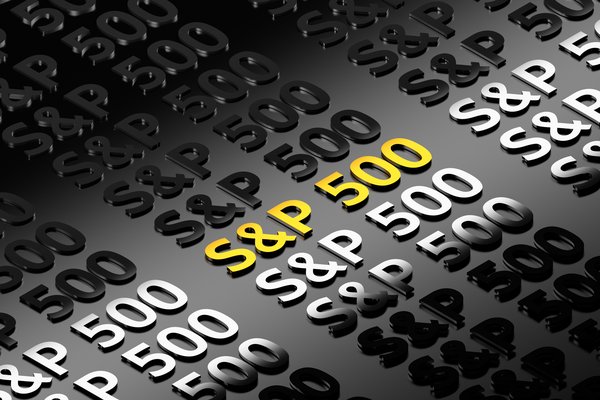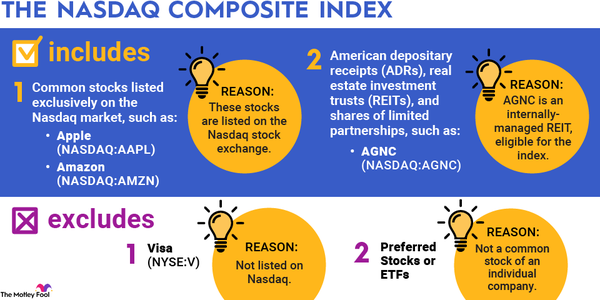A stock market index shows how investors feel an economy is faring. An index collects data from a variety of companies across industries. Together, that data forms a picture that helps investors compare current price levels with past prices to calculate market performance.
Some indexes focus on a smaller subset of the market. For example, the Nasdaq stock index closely tracks the technology sector. So if you want to know how technology companies are performing, you’d want to look at the Nasdaq index.
Indexes also vary in size, with some tracking just a handful of stocks and others looking at thousands. Each index serves a unique purpose because different investors are interested in different sectors.

Major stock indexes
Major stock indexes
Lesser known stock indexes
Lesser known stock indexes
Beyond these famous stock market indexes, however, there are thousands of lesser-known indexes. You can find indexes that reflect the performance of stocks in a certain country or that do business in a given sector of the economy. Some indexes separate large, mid-sized, and small companies into different categories. Others use investing strategies like growth, value, or dividend investing to select component stocks. Pretty much any type of stock you might be interested in, there's an index for that. The rise of index mutual funds and ETFs has led to a proliferation of indexes to help fund managers use passive investing strategies to minimize costs and let investors tailor their portfolio exposure as precisely as they like.
- Nasdaq 100 – Also an index of Nasdaq-listed stocks, the Nasdaq 100 is a narrower index focused on the largest 100 (roughly the top 3%) of stocks listed on the exchange; it specifically excludes financial companies. This index is a good way to track the performance of large-cap stocks, with a particular emphasis on technology.
- Russell 2000 – We mentioned this one above, but it's worth taking a deeper look. Consisting of 2,000 small-cap companies, the Russell 2000 index is widely regarded as the best benchmark of how smaller U.S. companies are doing. Of the stocks in the Russell 2000, the companies have a median market cap of just $1.15 billion (meaning that half are smaller). Generally speaking, small-cap stocks tend to be more volatile than their large-cap counterparts, but they also tend to outperform larger stocks over the long run. And, over shorter time periods, small caps can perform quite differently than large-cap stocks.
- Russell 3000 – If you're looking for a "total stock market" index, the Russell 3000 is it. The index is a combination of the Russell 2000 and the Russell 1000, which contains the largest 1,000 stocks in the market. The idea behind the Russell 3000, and funds that track it, is that it provides exposure to the entire U.S. stock market -- not only the largest companies and not just the relatively volatile small-cap segment.
Indexes by Types of Stock
- S&P 500 Value Index – The S&P 500 Value Index consists of the stocks in the S&P 500 that are considered to have "value characteristics." These are generally stocks that trade for relatively low multiples of their book values and earnings, and tend to be more mature, slower-growing companies. Some of the largest stocks in this index include JPMorgan Chase (JPM -1.1%), Berkshire Hathaway (BRK.A -0.18%)(BRK.B -0.22%), AT&T (T -1.42%), and ExxonMobil (XOM -0.78%).
- S&P 500 Growth Index – The stocks in the S&P 500 considered to have "growth characteristics" make up the S&P 500 Growth Index. While there are no specific cutoffs to distinguish growth stocks, they are generally (but not always) companies with above-average sales growth and trade for relatively high price-to-earnings ratios. Some of the largest stocks in the S&P 500 Growth Index are Apple (AAPL -1.65%), Amazon (AMZN 0.3%), Facebook (NASDAQ:FB), and Visa (V 0.39%).
Indexes by Market Capitalization
Technically, the S&P 500 is a part of a total-market index known as the S&P 1500. The S&P 500 is the large-cap portion, but other segments are:
- S&P MidCap 400 – This index tracks the middle of the market. From an investors' perspective, mid-cap stocks are often seen as a nice compromise between lower volatility and high long-term return potential.
- S&P SmallCap 600 – This index tracks 600 small-cap companies, although the Russell 2000 is a much more widely used index for small caps.
Reading a stock market index
How do you read a stock market index?
Reading an index correctly requires that you look at how the index value changes over time. New stock market indexes always begin with a certain fixed value based on the stock prices on its starting date. Thereafter, future index values measure rising and falling prices for those component stocks.
Not all stock market indexes use the same starting value, however, so just measuring index changes by using points can be misleading. For instance, if one index rises 250 points in a day while another rises just 10 points, it might seem as though the first index performed far better. However, if the first index started the day at 25,000 while the second index was at 250, then you can see that in percentage terms, the gains for the second index were far greater. A higher percentage gain means a bigger profit for you if you invest in funds that track the index, so it's better to focus on percentages than on point movements.
Moreover, even the most popular stock market indexes don't generally measure the performance of the entire market. Knowing which stocks are in an index can tell you which parts of the stock market are contributing to that index's performance and can explain why other indexes might not be performing the same way.
Uses of stock market indexes
What are the uses of stock market indexes?
Stock market indexes can be useful to follow for a few key reasons:
- Tracking the most-followed stock market indexes can give you a general sense of the health of the overall stock market.
- Tracking lesser-known indexes can help you see how a particular segment of the market is performing compared to the market as a whole.
- If you don't want to invest in individual stocks but rather simply want to match the performance of the overall market, then a cost-effective way to earn solid returns over time is by investing in index funds that track the stock market indexes you're most interested in.
Stock market indexes make it easier to know how the market is performing without having to follow the ups and downs of every individual stock. They also open up simple investment opportunities that even novice investors can use to participate in the long-term success of the stock market.
By periodically investing in an index fund, for example, the know-nothing investor can actually outperform most investment professionals.Warren Buffett
Weighted indexes
Weighted indexes
Each stock in an index has a weighting assigned to it. Stocks with higher weightings have more influence on the index's movements than those with lower weightings. There are three different ways that indexes typically assign weightings to their stocks:
- Price-weighted indexes give more weight to companies with higher stock prices. For example, in a hypothetical index made up of three stocks with share prices of $70, $20, and $10, the $70 stock would make up 70% of the total index, regardless of the relative size of the company. The Dow Jones Industrials is the most important example of a price-weighted index.
- Market-capitalization-weighted indexes give more weight to companies with higher market capitalizations. Both the S&P 500 and the Nasdaq Composite are market-cap weighted, and large companies like Apple and Microsoft (MSFT 0.76%) have much greater weightings than the smaller companies that make up the indexes.
- Equal-weight indexes give the same weighting to each stock, regardless of price, market capitalization, or any other factor.
There are some other stock market indexes that use proprietary methods to come up with weightings. For example, some indexes assign weightings based on the dividends that a stock pays out. For the most part, though, market-cap-weighted indexes are most prevalent, as they're often the easiest for index funds to track.













